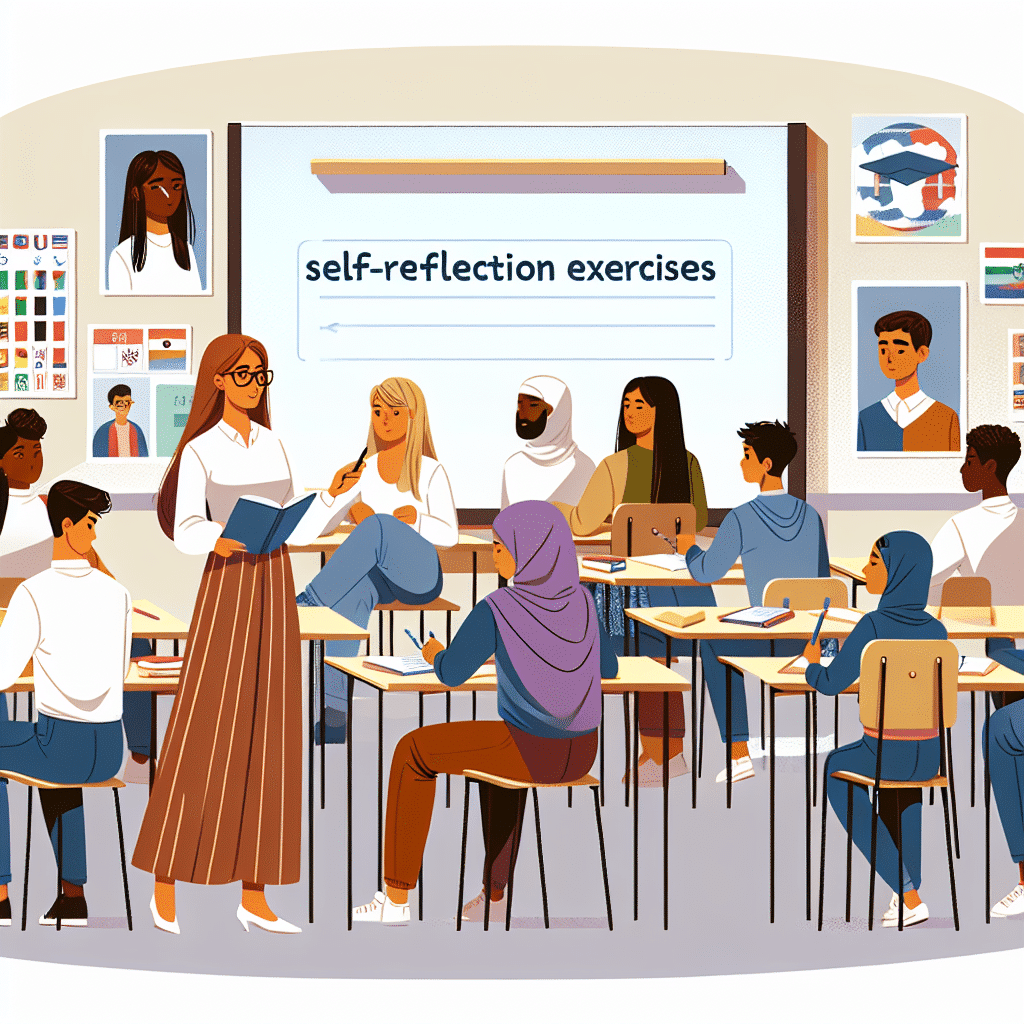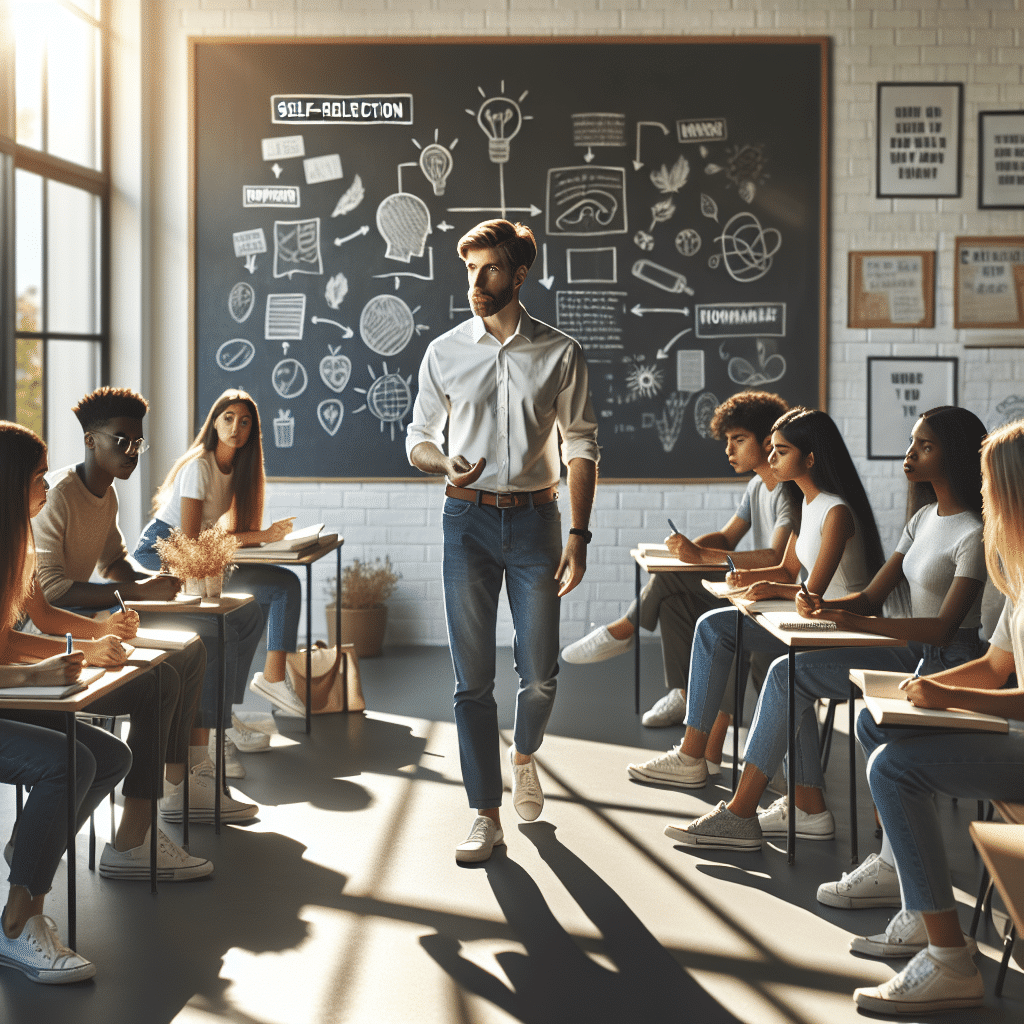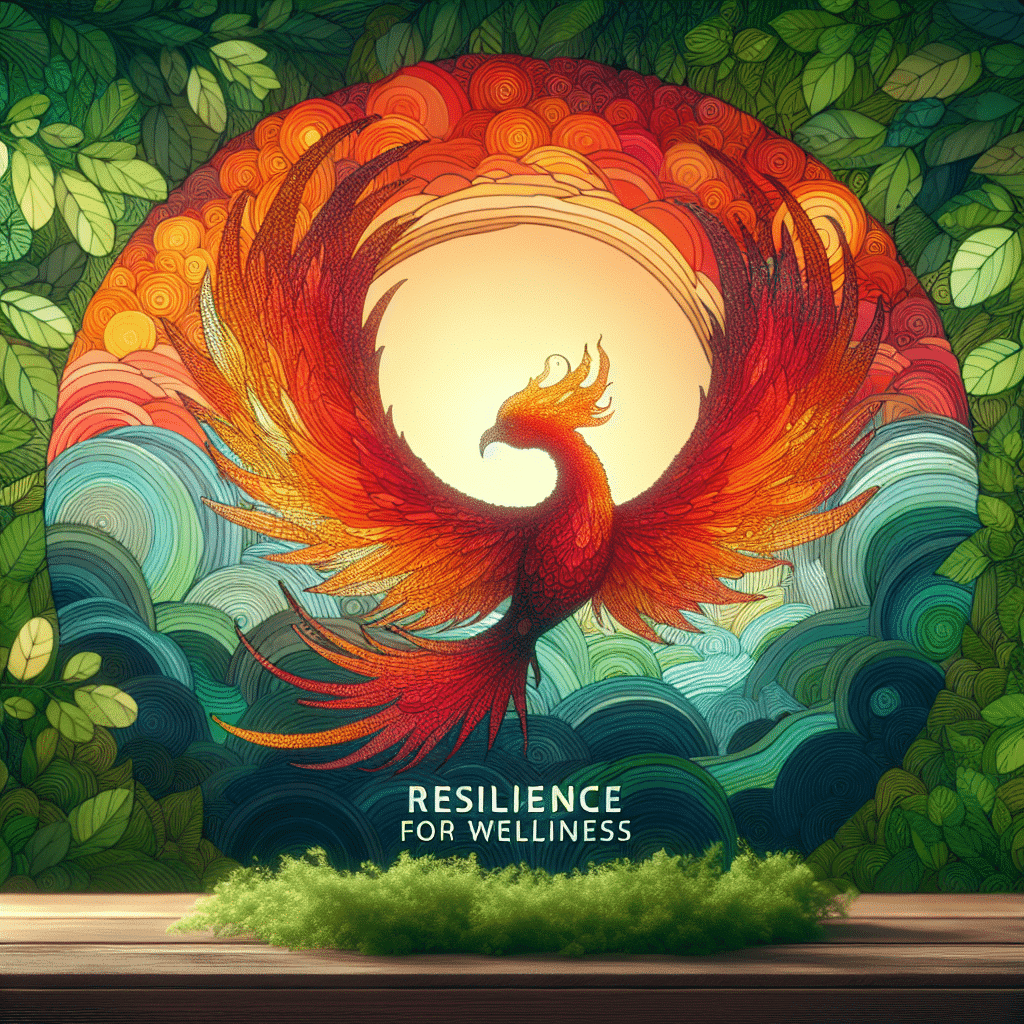
Benefits of Self-Reflection Exercises
Self-reflection exercises are valuable tools for students to enhance their learning experience and personal growth. By engaging in self-reflection, students can develop a deeper understanding of themselves, their strengths, and areas for improvement. These exercises encourage critical thinking, self-awareness, and the identification of goals and strategies for growth.
Self-reflection exercises can also help students develop essential skills such as problem-solving, decision-making, and goal setting. They provide an opportunity for students to assess their own progress and identify areas where they may need additional support or resources.
Furthermore, self-reflection exercises promote a positive mindset and improve overall well-being. They allow students to celebrate their achievements, acknowledge their efforts, and recognize their own resilience and motivation.
Types of Self-Reflection Activities
There are various types of self-reflection activities that educators can incorporate into their teaching strategies:
- Journaling: Encourage students to regularly write in a personal journal to reflect on their experiences, thoughts, and emotions.
- Questionnaires and Surveys: Provide students with guided questions or surveys to facilitate self-reflection on specific topics or areas of interest.
- Group Discussions: Foster an open and supportive environment where students can engage in reflective conversations with their peers.
- Visual Representations: Encourage students to express their thoughts and reflections through drawings, diagrams, or other visual representations.
- Goal Setting and Action Planning: Guide students in setting realistic goals and creating action plans to achieve those goals.
- Guided Reflection Prompts: Provide students with thought-provoking questions or prompts to stimulate their thinking and encourage deeper reflection.
How to Implement Self-Reflection Exercises
To effectively implement self-reflection exercises, educators can follow these steps:
- Introduce the concept of self-reflection and its importance in personal growth and learning.
- Model self-reflection by sharing personal experiences and demonstrating the process.
- Provide clear instructions and expectations for self-reflection exercises.
- Offer a variety of self-reflection activities to cater to different learning styles and preferences.
- Allocate dedicated time for self-reflection during class or as part of homework assignments.
- Encourage open and honest sharing while respecting students’ privacy and boundaries.
- Provide feedback and support to students throughout the self-reflection process.
Benefits of Self-Reflection Exercises
Self-reflection exercises are valuable tools for students as they provide numerous benefits to their personal and academic growth. These activities encourage students to take time to reflect on their thoughts, experiences, and actions, which can lead to enhanced self-awareness, critical thinking skills, and self-improvement.
One significant benefit of self-reflection exercises is the development of self-awareness. By engaging in these activities, students can gain a deeper understanding of their strengths, weaknesses, and values. This increased self-awareness allows students to make more informed decisions, set meaningful goals, and create strategies to achieve them.
Additionally, self-reflection exercises promote critical thinking skills. Through the process of examining their thoughts and experiences, students learn to analyze and evaluate their actions. This ability to think objectively and critically enables students to develop problem-solving skills, resolve conflicts, and make sound judgments in both their academic and personal lives.
Self-reflection exercises also foster self-improvement. As students reflect on their past actions and behavior, they can identify areas for growth and improvement. By setting specific goals based on their reflections, students can develop action plans and strategies to work towards personal and academic development. This process empowers students to take ownership of their learning journey and actively pursue growth opportunities.
In addition to these personal benefits, self-reflection exercises can also positively impact students’ academic performance. By regularly reflecting on their experiences, students become more engaged and active participants in their learning. This practice enhances their understanding of the subject matter and increases their ability to apply their knowledge effectively. Self-reflection exercises also help students develop essential skills such as self-regulation, goal-setting, and metacognition, which are crucial for academic success.
In conclusion, self-reflection exercises offer numerous benefits to students, including increased self-awareness, development of critical thinking skills, and opportunities for self-improvement. By engaging in regular self-reflection activities, students can enhance their personal and academic growth, ultimately leading to greater success in their educational journeys.
How to Implement Self-Reflection Exercises
Implementing self-reflection exercises in the classroom can greatly enhance students’ learning experiences and personal growth. Here are some steps to effectively incorporate self-reflection into your teaching:
- Introduce the concept: Begin by explaining the importance of self-reflection and its benefits. Help students understand that self-reflection is an opportunity for self-discovery, self-improvement, and goal-setting.
- Set clear expectations: Clearly articulate what you expect from students in terms of the frequency and depth of their self-reflection exercises. Provide guidelines for the format and structure of their reflections, such as using a journal or completing online surveys.
- Provide prompts or questions: Offer a variety of self-reflection prompts or questions to spark students’ thinking. These prompts can be related to their academic performance, personal growth, relationships, or any other relevant areas of their lives. Make sure the prompts are open-ended to encourage critical thinking and self-expression.
- Allocate time for reflection: Dedicate specific class time for self-reflection exercises. This could be done at the beginning or end of the class, during regular intervals, or as a designated reflection day. Consistency is key to establishing the habit of self-reflection.
- Encourage honest and authentic reflection: Foster an environment where students feel comfortable sharing their thoughts and feelings honestly. Emphasize that self-reflection is a personal process and there are no right or wrong answers. Encourage students to dig deep and be introspective.
- Provide feedback: Regularly provide feedback on students’ self-reflection exercises. Acknowledge their efforts and provide constructive comments. This feedback can be given individually, in small groups, or through written feedback. Encourage students to use this feedback for their personal growth.
- Reflect as a group: In addition to individual self-reflection, incorporate group reflection activities. This can include discussions, sharing sessions, or group projects focused on collective self-reflection. Group reflection allows students to learn from one another and gain new perspectives.
- Monitor progress: Keep track of students’ self-reflection exercises and monitor their progress over time. This can be done through journals, online platforms, or other tracking methods. Regularly review students’ reflections to identify areas of growth and provide targeted support.
- Adapt and adjust: Continuously assess the effectiveness of the self-reflection exercises and make adjustments as needed. Reflect on your own practices and seek feedback from students to improve the process. Flexibility and adaptation are essential for creating a successful self-reflection environment.
By implementing self-reflection exercises, you empower students to take charge of their learning and personal growth. These exercises foster self-awareness, critical thinking, and goal-setting skills, which are valuable for their academic and future success.

Tips for Effective Self-Reflection
1. Create a Safe and Supportive Environment
In order for students to engage in meaningful self-reflection, it is important to create a safe and supportive environment. Encourage an open and non-judgmental atmosphere where students feel comfortable sharing their thoughts and experiences. Let them know that self-reflection is a personal journey and there is no right or wrong answer.
2. Provide Clear Guidelines
When assigning self-reflection exercises, provide clear guidelines for what students should focus on and how to approach the activity. Clearly define the purpose of the exercise and any specific questions or prompts they should address. This will help students stay focused and ensure that their reflections are meaningful.
3. Set Realistic Expectations
Self-reflection is a process that takes time and effort. It is important to set realistic expectations for students and to emphasize that self-reflection is not a one-time exercise, but an ongoing practice. Encourage students to take their time and engage in regular self-reflection to fully reap the benefits.
4. Provide Examples
For students who are new to self-reflection, providing examples can be helpful in guiding their process. Share examples of completed self-reflection exercises that highlight different ways to approach the activity. This will help students understand the depth and breadth of self-reflection and inspire them to think more deeply about their own experiences.
5. Encourage Authenticity
Authenticity is key in self-reflection. Encourage students to be honest and open in their reflections, even if it means acknowledging their shortcomings or mistakes. Remind them that self-reflection is a tool for personal growth and that true growth comes from being able to objectively assess oneself.
6. Incorporate Peer Feedback
Peer feedback can be a valuable addition to the self-reflection process. Encourage students to share their reflections with a partner or in a small group setting. This allows them to gain different perspectives and learn from their peers’ experiences. However, it is important to set clear guidelines for providing constructive feedback and ensure that the focus remains on personal growth rather than criticism.
7. Reflect on the Reflection
After completing a self-reflection exercise, encourage students to reflect on their reflections. This may sound redundant, but it is a valuable step in the process. By reflecting on their initial thoughts and insights, students can gain a deeper understanding of themselves and their growth over time.
Implementing effective self-reflection exercises can empower students to gain a better understanding of themselves and their learning process. By creating a safe and supportive environment, providing clear guidelines, and encouraging authenticity, students can engage in meaningful self-reflection that promotes personal growth and development.
Examples of Self-Reflection Prompts
1. Reflecting on Personal Growth
One important aspect of self-reflection exercises is to encourage students to think about their personal growth and development. Here are some prompts that can help students reflect on their personal growth:
- Describe a time when you faced a challenge and how you overcame it. What did you learn from this experience?
- Think about the skills you have developed over the past year. How have these skills helped you in your personal and academic life?
- What are some personal goals you have set for yourself? How have you progressed towards achieving these goals?
2. Reflecting on Learning Experiences
Self-reflection exercises can also focus on the learning experiences students have had. These prompts can help students analyze and evaluate their learning experiences:
- Reflect on a difficult assignment or project you completed. What were the main challenges you faced, and how did you overcome them?
- Think about a concept or topic that you found particularly challenging to understand. How did you approach learning this concept, and what strategies did you find helpful?
- Consider the feedback you have received from teachers or peers. How has this feedback influenced your learning and growth?
3. Reflecting on Goal Setting and Planning
Goal setting and planning are important skills for students to develop. These prompts can help students reflect on their goal setting and planning processes:
- Describe a specific goal you set for yourself at the beginning of the school year. How did you plan and work towards achieving this goal? Did you achieve it? Why or why not?
- Think about a time when your goals changed or evolved. How did you adapt your plans and strategies to accommodate these changes?
- Reflect on your time management skills. How do you prioritize tasks and assignments, and how does this impact your ability to achieve your goals?
These are just a few examples of self-reflection prompts that can be used with students. It is important to choose prompts that are relevant to the students’ experiences and encourage deep thinking and analysis. By incorporating self-reflection exercises into their routine, students can gain valuable insights into their growth, learning experiences, and goal setting processes.

Summary
Self-reflection exercises for students can have numerous benefits, including enhanced self-awareness, improved critical thinking skills, and increased motivation. There are different types of self-reflection activities that can be implemented, such as writing journals, engaging in group discussions, or creating visual representations. Teachers can implement these exercises by incorporating them into the curriculum, providing clear guidelines, and setting aside dedicated time for reflection. To ensure effectiveness, students should be encouraged to be honest and open in their reflections and provided with constructive feedback. Examples of self-reflection prompts can range from asking students to reflect on their learning process to evaluating their personal growth. By incorporating self-reflection exercises, students can develop a deeper understanding of themselves and their learning, ultimately leading to personal and academic growth.






